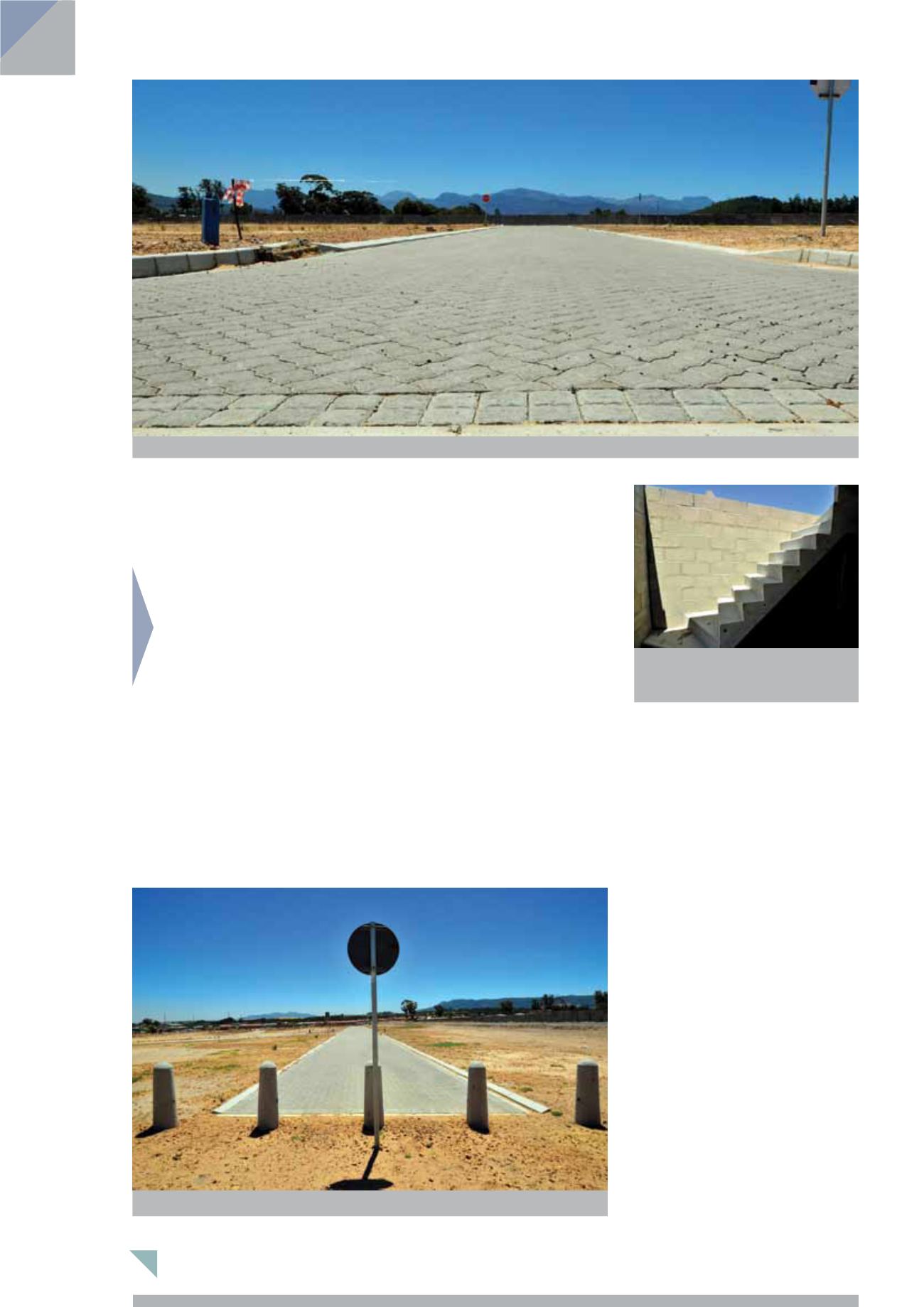
June 2013
CONSTRUCTION WORLD
34
Very wet winters, a high water table and unstable sub-grade
material (earth) has necessitated approximately half of the 24 000 m²
road-building and access-course project in Klapmuts,Western Cape, to
be surfaced with concrete block paving (CBP) because of its superior
strength and stability properties.
projects & contracts
ASPHALTWASONLYUSED
where the water
table was deemed low enough and the sub-
grade sufficiently stable by themain contrac-
tors, Power Construction.
The road-building project forms part of
a turnkey housing contract which is being
financedby theDepartment of HumanSettle-
ments. The tender was awarded to Power
Construction by the StellenboschMunicipal-
ity, for whomthe project is being undertaken.
It involves the construction of 1 067 x
40 m² subsidy houses in two phases over
five-years. Phase I is being undertaken in two
portions of which Phase IA sees the construc-
tion of 480 houses, due for completion by the
end of March this year.
Designed by BKS Consulting Engineers
and built by Seymour Paving, the road and
Klapmuts housing project
One of the precast concrete staircases being
used in the construction of the double-storey
units at Kalpmuts.
access-course project involved surfacing
some 11 000 m² with CBP, 6 600 m² of access
course and 4 400 m² of roads. Asphalt was
only used where the sub-grade was consid-
ered sufficiently stable.
Steven Levey, senior quantity surveyor at
Power Construction, said that the contract
includes a 10-year latent defect clause and
this was the main reason why concrete block
paving was deployed in the sections where
the sub-grade was unstable.
“CBP provides a long termpaving solution
unlike asphalt, which under these conditions,
would most likely have begun cracking
within five years. Moreover, CBP surfaces are
aesthetically pleasing and can easily be lifted
and replaced as new, for example, during the
installation of electric cables, which often
takes place after the roads have been laid.”
Power’s contracts manager, Pietre Smit
says that grey 60 mm and 80 mm 35 MPa
interlocking concrete paving blocks were
used for the CBP. They were supplied by
Concrete Manufacturers Association (CMA)
member, C.E.L. Paving.
“We laid the paving on a G4 base which
is superior to a sub-base and can easily with-
stand the high water table. Moreover, it has
good load-bearing capacity,”says Smit.
Seymour Paving director, Jon Whiting,
says the borders of both the access courses
One of the CBP roads in Klapmuts which clearly shows the neat finish of double-cobble edging.
A recently constructed CBP road in Klapmuts in which precast concrete kerbing and bollards were also used.


